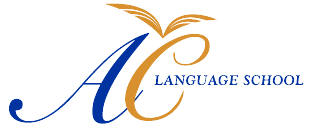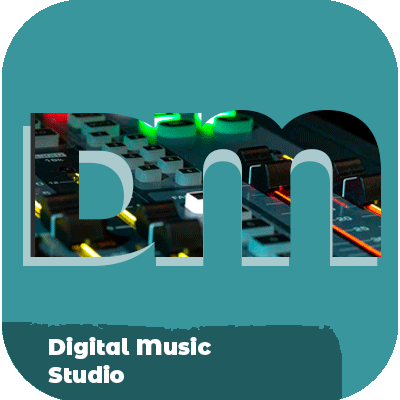- Understand the basics of digital communication systems
- Learn how different channels are used for communication
- Explore principles of data transmission & networking
- Analyze voice over the internet (VoIP) & mobile networks
- Utilize radio waves for broadcasting
- Comprehend modulation techniques & protocols
- Evaluate network security measures & encryption algorithms
- Create custom applications on distributed systems
- Develop strategies for efficient video streaming
- Design custom solutions based on communication needs
 Course Description: This course covers the fundamentals of digital communications. Students will learn about various communication channels and their features, such as digital audio, video, radio, internet services, and mobile networks. At the end of this course, students will be able to analyze modern communication systems and create custom applications for effective communication. Course Objectives:
Course Description: This course covers the fundamentals of digital communications. Students will learn about various communication channels and their features, such as digital audio, video, radio, internet services, and mobile networks. At the end of this course, students will be able to analyze modern communication systems and create custom applications for effective communication. Course Objectives: Course Description: This course explores digital innovations in maritime transport, focusing on the technologies and solutions that enhance maritime operations. Students will learn about digital infrastructure, data analytics, and the impact of digitalization on maritime transport. Course Objectives:
Course Description: This course explores digital innovations in maritime transport, focusing on the technologies and solutions that enhance maritime operations. Students will learn about digital infrastructure, data analytics, and the impact of digitalization on maritime transport. Course Objectives:- Understand the role of digital innovations in maritime transport.
- Learn about digital infrastructure and technologies.
- Explore the impact of digitalization on maritime operations.
- Develop skills for implementing digital solutions in maritime transport.
- Implement digital innovations in maritime transport.
- Utilize digital infrastructure to enhance maritime operations.
- Apply data analytics to improve maritime transport systems.
- Manage digital transformation effectively in maritime contexts.
 Course Description: This course covers digital innovations in urban transport, focusing on the technologies and solutions that enhance urban mobility. Students will learn about smart mobility solutions, digital infrastructure, and the role of data analytics in improving urban transport systems. Course Objectives:
Course Description: This course covers digital innovations in urban transport, focusing on the technologies and solutions that enhance urban mobility. Students will learn about smart mobility solutions, digital infrastructure, and the role of data analytics in improving urban transport systems. Course Objectives:- Understand the role of digital innovations in urban transport.
- Learn about smart mobility solutions and digital infrastructure.
- Explore the impact of data analytics on urban transport.
- Develop skills for implementing digital transport solutions.
- Implement smart mobility solutions in urban transport.
- Utilize digital infrastructure to enhance urban mobility.
- Apply data analytics to improve transport systems.
- Manage digital innovations in urban transport effectively.

Digital Marketing & Social Networks & The Google Advantage Course Syllabus
Course Description: This online course will provide an overview of digital marketing, social networks, and the advantages of using Google. It will cover topics such as the benefits of social media marketing, best practices for Google+, and the advantages and disadvantages of both social media ads and Google Ads. Students will learn how to use these tools to create successful digital marketing campaigns. Course Objectives:- Understand the fundamentals of digital marketing
- Learn about the different types of social networks available
- Identify the benefits of using Google+ for digital marketers
- Develop an understanding of best practices for creating a successful Google+ Business page
- Compare and contrast the advantages and disadvantages of both social media ads and Google Ads
- Analyze how to use these tools to create successful digital marketing campaigns
- Explore trends in social media advertising
- Examine when it is necessary to use Google Ads instead of social media ads
- Investigate how to leverage the power of popular social media networks for marketing and branding goals
- Discover ways to push brand image and online presence with Google+
 Course Description: This course provides training on utilizing digital marketing techniques for healthcare organizations. Participants will learn about online marketing, social media, and digital advertising to enhance patient engagement and organizational growth. Outcomes:
Course Description: This course provides training on utilizing digital marketing techniques for healthcare organizations. Participants will learn about online marketing, social media, and digital advertising to enhance patient engagement and organizational growth. Outcomes:- Implement effective digital marketing strategies in healthcare.
- Utilize online marketing techniques to engage patients.
- Develop social media marketing plans.
- Implement digital advertising strategies.
- Enhance patient engagement and organizational growth through digital marketing.
- Introduction to Digital Marketing in Healthcare
- Principles of Digital Marketing
- Online Marketing Techniques
- Social Media Marketing in Healthcare
- Developing Digital Marketing Plans
- Implementing Digital Advertising Strategies
- Evaluating Digital Marketing Outcomes
- Engaging Patients Through Digital Marketing
- Best Practices in Digital Marketing
- Case Studies and Practical Applications in Digital Marketing
 Course Description: This certification focuses on digital marketing strategies for the hospitality industry. Topics include social media marketing, search engine optimization, content marketing, and online advertising. Participants will learn to leverage digital channels to promote hospitality businesses. Course Objectives:
Course Description: This certification focuses on digital marketing strategies for the hospitality industry. Topics include social media marketing, search engine optimization, content marketing, and online advertising. Participants will learn to leverage digital channels to promote hospitality businesses. Course Objectives:- Understand the principles of digital marketing.
- Develop effective social media marketing strategies.
- Implement search engine optimization (SEO) techniques.
- Create engaging content marketing and online advertising campaigns.
- Apply digital marketing strategies in hospitality settings.
- Develop and implement effective social media marketing campaigns.
- Utilize SEO techniques to improve online visibility.
- Create engaging content marketing and online advertising campaigns.
 Course Description: This course covers digital signal processing (DSP) and its applications in aviation communications. Students will learn about DSP technologies, implementation strategies, and the impact of DSP on communication systems and operational efficiency. Course Objectives:
Course Description: This course covers digital signal processing (DSP) and its applications in aviation communications. Students will learn about DSP technologies, implementation strategies, and the impact of DSP on communication systems and operational efficiency. Course Objectives:- Understand the principles of digital signal processing.
- Learn about DSP technologies and implementation strategies.
- Explore the impact of DSP on aviation communications.
- Develop skills for managing DSP systems.
- Implement DSP systems in aviation communications.
- Utilize DSP technologies effectively.
- Enhance communication systems through DSP.
- Manage DSP systems efficiently.
 Course Description: This course covers the principles and techniques of digital signal processing (DSP), including signal analysis, filtering, and transformation. Students will learn to apply DSP techniques to communication systems. Course Objectives:
Course Description: This course covers the principles and techniques of digital signal processing (DSP), including signal analysis, filtering, and transformation. Students will learn to apply DSP techniques to communication systems. Course Objectives:- Understand the principles of digital signal processing.
- Learn about signal analysis and filtering techniques.
- Develop strategies for applying DSP to communication systems.
- Implement DSP techniques for signal transformation and processing.
- Evaluate the impact of DSP on communication system performance.
- Explain the principles of digital signal processing.
- Analyze and filter signals using DSP techniques.
- Apply DSP techniques to communication systems.
- Implement signal transformation and processing using DSP.
- Assess the impact of DSP on communication system performance.
 Course Description: This course covers the principles and techniques of digital signal processing (DSP), including signal analysis, filtering, and transformation. Students will learn to apply DSP techniques to communication systems. Course Objectives:
Course Description: This course covers the principles and techniques of digital signal processing (DSP), including signal analysis, filtering, and transformation. Students will learn to apply DSP techniques to communication systems. Course Objectives:- Understand the principles of digital signal processing.
- Learn about signal analysis and filtering techniques.
- Develop strategies for applying DSP to communication systems.
- Implement DSP techniques for signal transformation and processing.
- Evaluate the impact of DSP on communication system performance.
- Explain the principles of digital signal processing.
- Analyze and filter signals using DSP techniques.
- Apply DSP techniques to communication systems.
- Implement signal transformation and processing using DSP.
- Assess the impact of DSP on communication system performance.

